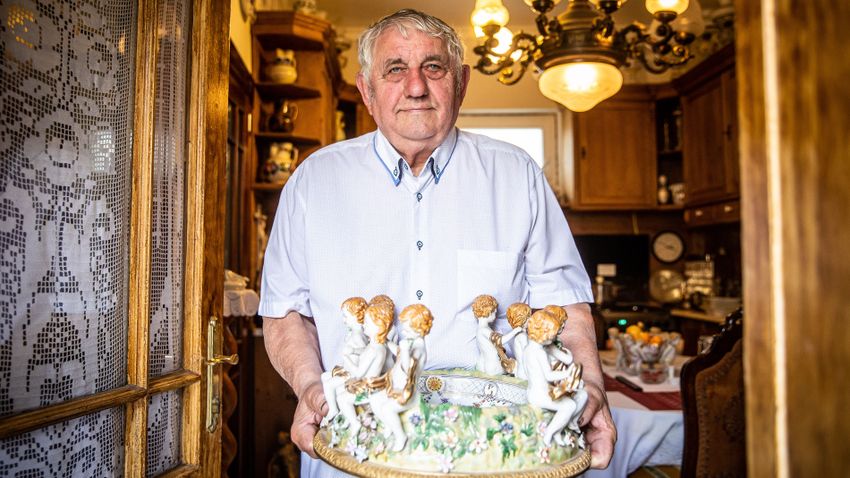– Recently, a temporary exhibition of lanterns and candlesticks was opened at the Munkácsy Memorial House, which we previously inform us. In addition, your collection of measuring tools, ashtrays, just to name a few, was presented. How did the passion for collecting arise in your life?
– I started collecting fifty years ago, when I worked at the Vieques County Library with my Uncle Bali Liptak. He was the largest collector in the province, and under his influence I began to collect objects mainly related to ethnography.
– Please show your collection!
– I collect everything, but I especially love silver, glass, and utensils. I’m mainly associated with peasant-themed things, but I have hundreds of pieces from all kinds of collections, and I try to keep the best of everything.
– Which of your collection would you highlight because it is more special or because it is closer to your heart?
– I only have part of my collection in my house, but I have a farm, where I have a large warehouse, where I store mainly larger things and ethnographic objects. Also, we have another house nearby, where I collect civilian things. I grew up on a farm, so folk peasant tools are the ones I’m most associated with. I have personally seen many of these in use.
– How many exhibitions have been held of these objects, and what pieces of the collection have the locals been able to see?
– I’ve had about 20-30 exhibitions, most recently – Show lights – in the memorial house. The space in the gallery space is very small, and you also have to make sure things are clearly visible, so I chose the smaller pieces out of a group of 140 lights in total. I’d also like to display larger lamps, but there was no room for that, and they didn’t fit in the showcases either. But I am also happy with this exhibition, because it was organized in this way.
Before that, baking molds were served in the same place, and next time I will open a gallery of bottles. According to our plans, we would like to open four exhibitions annually, always adjusted according to the specific season. For example, the bottles correspond to autumn, so they will also be visible at the Munkácsy Memorial House from August to September. Still, I’d like to give a lot of it: at least half of the 450-piece group.
– Let’s go back a little to the exhibition of lamps. Besides the fact that only small pieces can be considered, what criteria did you use to compile the materials for the exhibition?
– I thought a lot about how it would be put together, but the venue dictated what could be included in the gallery. I started with primitive lamps, sconces, and then picked their later forms. One hundred and fifty years old lamps can also be seen in the gallery.
– How do you usually get these items?
– A lot of people know that I collect a lot of stuff, so they call me. They also know that I pay more for it than a dealer or seller – Collectors always pay more because we take it for ourselves.
– Are there any other antiques or treasures that are still missing from your collection, but that you really want?
– There are a lot of things. But I buy something every day, and usually there isn’t a single day that I don’t bring home something, and I feel safe at home. Now, for example, I am dealing with the acquisition of a large collection of bulbs, and I collect them constantly. I managed to get hold of a large civilian lamp, I now have about 70-80 pieces that I managed to purchase for this kit.
– What does your wife’s family say about this passion?
– My wife found it strange at first. We’ve been together for 31 years now. In the beginning, he often said to each being that there were already twenty or fifty of them, so why do we need more? He also suggested I sell it instead (laughs). But now he doesn’t say anything because he can see I’m doing it well. He sees that we are not without – There are many collectors who take money from their families, prefer to eat less or not spend on anything, and prefer to buy a certain thing. We don’t have that here.
Why does work burn us?
In the Munkácsy Memorial House, at the end of May, the oldest lighting device and various candles will be displayed in an open exhibition. In addition, there was a place for the newer devices reminiscent of today, from which today’s lamps were formed. The exhibition was inaugurated by Sándor Mácsai, Head of the Cultural Department for the Preservation of Traditions in Piquiscapa, who said: The exhibition also presents many surprises, since visitors can find out, for example, where the expression that “someone’s work burns on their nails” comes from, or what is served Purpose nursing lamp.












































